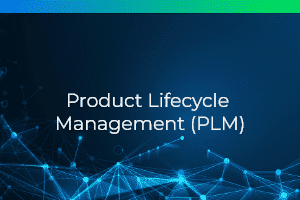What is Product Lifecycle Management?
Product Lifecycle Management – PML for short – covers every phase in the lifecycle of a product. The German term for PML is Product Lifecycle Management (PLM). The aim is to integrate all the information generated during the product lifecycle. PLM therefore requires IT systems to document and manage all data. Companies benefit from greater transparency and, as a result, gain better control over the various processes required during each phase of the life cycle.
The product life cycle begins with development and ends with the withdrawal of the product from the market. PLM is concerned with managing the individual phases in the life of a product as efficiently as possible. Development and production should be as cost-effective as possible and the new product should be available on the market as quickly as possible.
Why is PLM indispensable?
PLM aims to intelligently integrate every piece of information created during the life cycle of a product. It acts as a digital backbone to help companies document and manage the flood of data with IT systems. This orchestrated system brings order and clarity to complex processes, increases transparency and gives companies a high degree of control over every significant production step.
The development of a product can be divided into five phases:
- Idea generation, concept and design: The creative source.
- development: The idea takes shape.
- Production and market launch (sales planning, sales, sales logistics): Feel the excitement when the product conquers the market.
- Service and support: I ensure that the product lives up to its promise.
- Withdrawal from the market (end-of-life management): A dignified farewell and recycling of precious resources.
